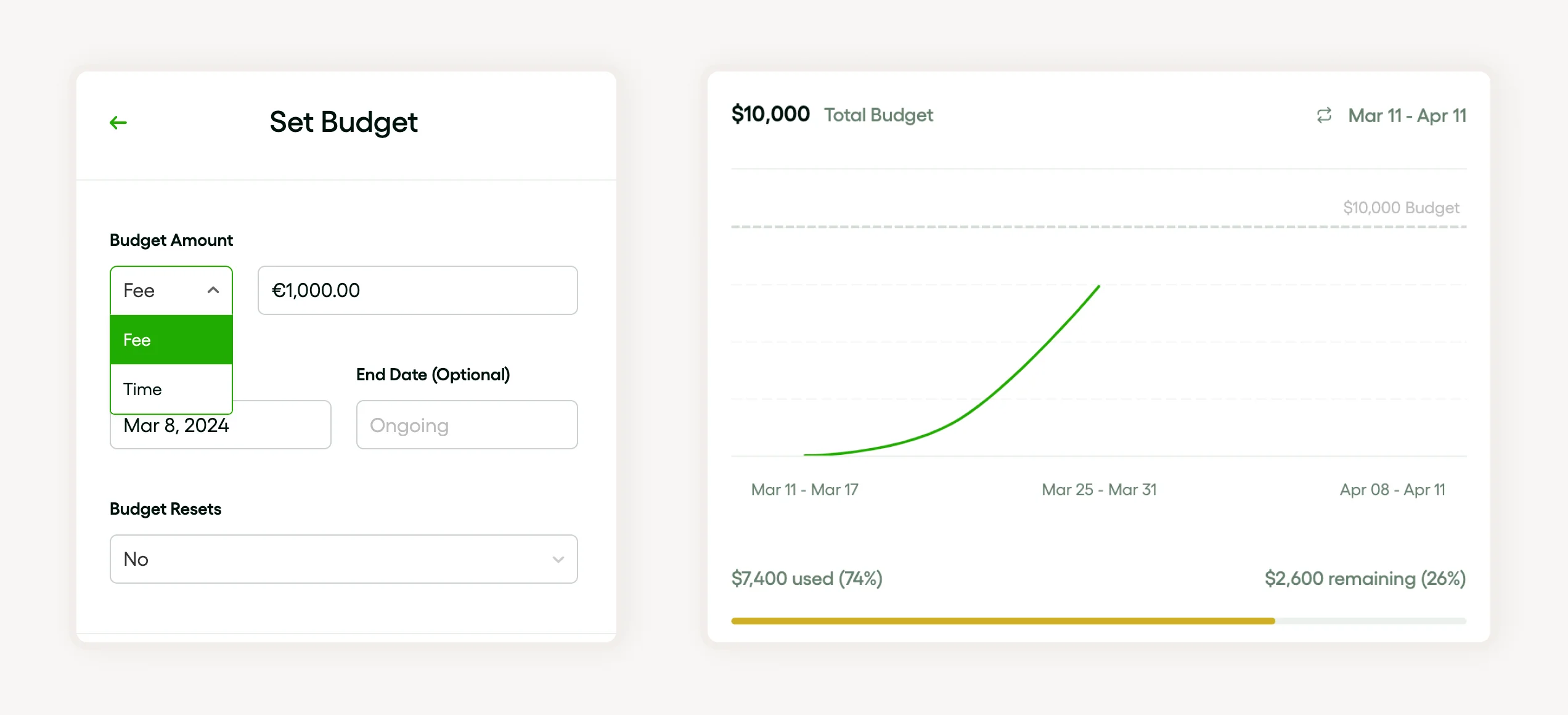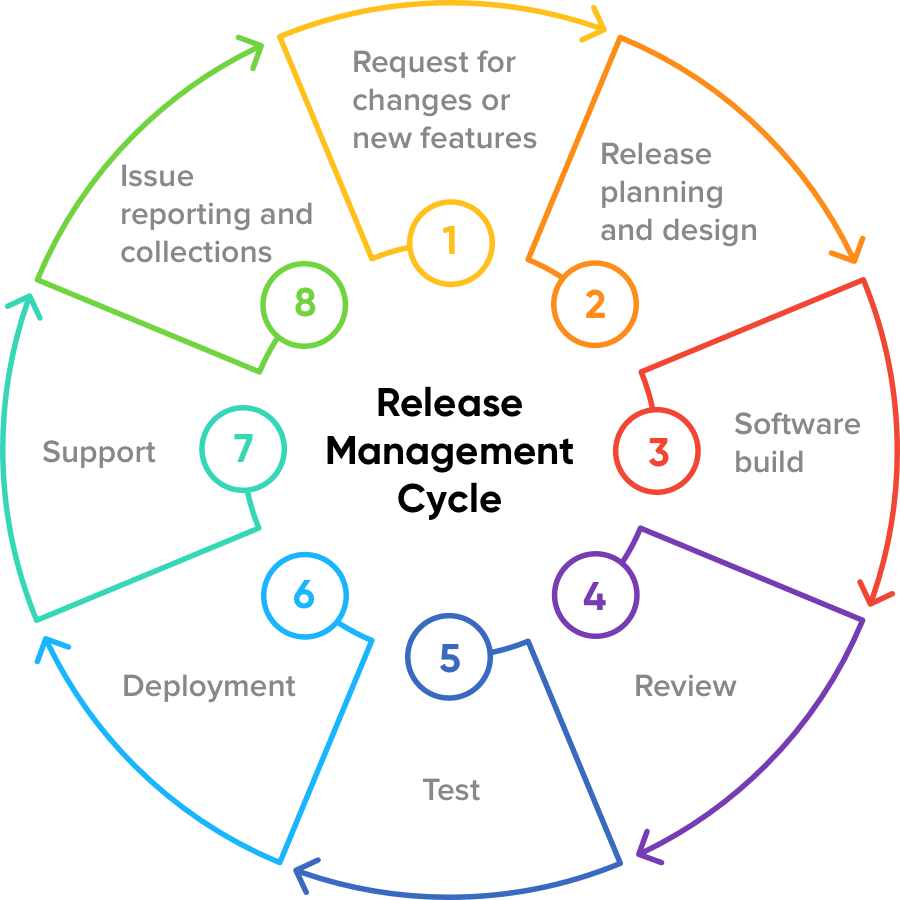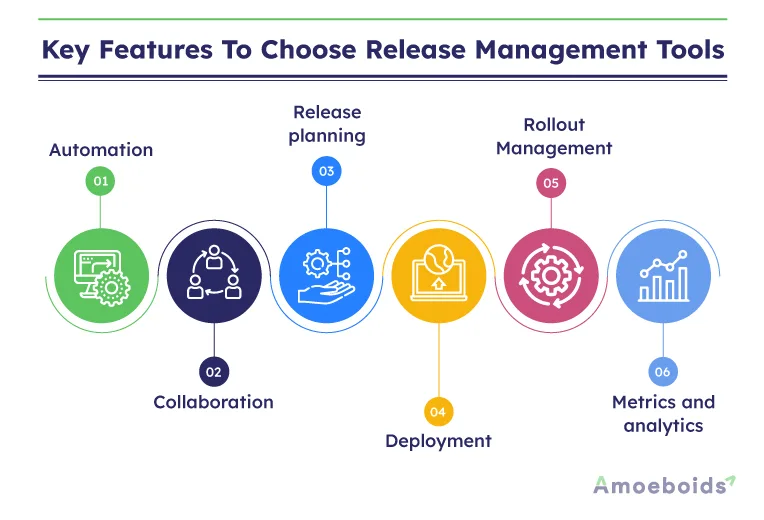Successful Agile release planning starts at the inception stage upon creating the product vision. This is through a product roadmap—a structure through which the product backlog and user stories needed to create software or product are defined. Product increments are then planned and scheduled based on the identified and developed user stories.
Under Agile project management, these product increments are created over a series of sprints, and managed by a scrum master. Following the Agile methodology, these sprints result in incremental releases. With each product release, steps are taken to get the project closer to the original vision.
Clear Scrum release planning and good cross-team communication are essential to manage these changes and ensure successful product development in Agile environments.
Understanding Agile release planning
With Agile project management, Agile release planning is a classic concept of developing a product. It is the strategy through which the development and subsequent release of a product is planned through a vision and a roadmap. It is the all-inclusive stage that lets the development team predict the software development process across multiple sprints. The fundamentals of Agile release planning are the product backlog that consists of user stories and the resulting product increment. The role that the incremental releases play in the Agile strategy is managed by the scrum master, focusing on adaptability and stakeholder contentment.
Understanding project management plan and steps
Understanding a project management plan and the steps to create one within Bonsai software involves recognizing the importance of a structured approach to managing projects.

Understanding the project management plan, particularly the steps involved in setting a budget, is crucial for the successful delivery of any project. Develop a cost baseline, which is a time-phased budget that will be used to measure and monitor cost performance on the project. Setting up a realistic budget for your project and manage it effectively to ensure that your project stays on track financially.
Definition and importance of Agile release planning

Agile release planning is vital in Agile project management, shaping the product development journey. Essential components like product vision, backlog, and user stories are established during scrum release planning, creating a roadmap for software development. The plan segments the project into sprints, each culminating in a product increment.
The advantages of effective Agile release planning include enhanced product quality, customer satisfaction, and greater control over the project. Contributions from the scrum master and team members during planning reflect the team’s collective intelligence in the product release.
Key components of Agile release planning
In Agile project management, specifically in software and product development, Agile release planning is critical. It involves formulating a product vision and roadmap from prioritized backlog features, often as user stories. This planning is essential in scrum release planning. Planning centers on sprints, with each sprint delivering a product increment to ensure that there are incremental releases that add value to the customer. In this case, the scrum master plays a leadership role in steering the planning and implementation of Agile practices.
Steps in Agile release planning

In Agile project management, release planning is an important phase in the life cycle of software development, commencing with the generation of a product vision. The derived vision is then broken down into user stories that are further placed on a product backlog. The scrum master, together with the team, uses these stories to develop a product roadmap, which dictates the development of the product within the agreed sprints. Each sprint generates a product increment, thus resulting in incremental releases in the scrum release planning. This product release process using Agile ensures the product meets desired outcomes effectively and efficiently.
Identifying the product vision
Product vision is one of the essential concepts in Agile project management; this vision drives the creation of the product and the software. It enables a clear understanding of what the product should do, thus setting the direction for the product backlog, planning stage, and scrum release planning. This vision is critical to shaping user stories, distinguishing sprints, and steering the product roadmap. It helps the scrum master in coordinating incremental releases, each contributing to the overall product increment. Thus, product release occurs in an orderly manner, influenced by the product vision in Agile methodology.
Creating a product roadmap
Creating a product roadmap is a crucial aspect of Agile project management. This process hinges on a clear product vision, a well-prioritized product backlog, and well-defined user stories. These elements help the scrum master effectively guide the software development team through planning stages and sprints.
The roadmap is instrumental for scrum release planning, ensuring product increment progresses smoothly towards the product release. Using Agile methodology, the product development process becomes transparent and adjustable, paving the way for well-managed incremental releases.
Developing a release plan
Under the umbrella of Agile project management, a release plan is integral to a successful software development cycle. This planning stage is led by the scrum master, heavily Involving Product backlog and user stories to develop a clear product vision.
Scrum release planning parts the overall scheme into manageable sprints, allowing progress through incremental releases. This product increment system, combined with a comprehensive product roadmap, helps align the team on the timing and content of subsequent releases, enhancing overall product development.
Reviewing and adjusting the plan
Upon Completion of The planning stage in Agile project management, we must ensure that the product vision aligns with the product backlog. Regular, incremental releases ensure that our software development continues to align with both user stories and the product roadmap. The scrum master reviews these elements periodically, usually during sprints, to adjust accordingly.
In this context, scrum release planning becomes essential. It allows us to focus on the production increment and plan for the future product release. It is crucial for continual alignment with Agile methodology during the product development process.
Best practices for Agile release planning

In Agile project management, meticulous planning is essential, particularly in The realm of Product release. To achieve this, an integral step is scrum release planning, where the scrum master works with the team to devise a detailed release strategy based on user stories and product backlog. The overarching product vision is also crucial to inform this strategy.
Crucial steps in Agile methodology include structuring a product roadmap, defining sprints, and preparing for incremental releases.
A product roadmap offers a visual representation of the planned product increment, while sprints help manage workload and meet deadlines in a manageable way. Incremental releases uphold the Agile principle of delivering working software frequently, promoting user feedback and flexibility.
Ensuring cross-functional team involvement
In Agile project management, cross-functional team involvement is crucial in software and product development. It starts from the planning Stage Where the product vision Is formed, the product backlog Is created, and user stories Are conceptualized To increase the likelihood of a successful product increment. Cooperation extends to scrum release planning and execution of sprints.
With the active involvement of the cross-functional team, the product roadmap is much easier to navigate, making for smoother, incremental releases. Here, the direction and counsel of the scrum master are invaluable, underlining how important every role is in Agile methodology and cross-functional teamwork.
Emphasizing on user stories
In Agile project management, user stories play a vital role in software and product development. These are the building blocks for creating product backlog and shaping the product vision. They form the heart of scrum release planning, guiding The creation of product roadmap And defining the work for sprints.
Scrum master coordinates with the team to facilitate the planning stage, prioritize user stories and plan for incremental releases. The end of each sprint results in a product Increment, That brings the team one step closer to the final product release.
Through Agile methodology, these user stories ensure a customer-centric approach in product development, bridging the gap between developers and clients.
Adopting a flexible approach
Adopting a flexible approach is integral when it comes to product development, especially in the world of software development. This Can be achieved Through The Agile Project management and scrum release planning. This Involves creating a product backlog, a list of user stories that helps visualize the product roadmap and enable a product vision.
The Agile methodology allows for Sprints, Short, concrete plans detailing the next Steps of product development. This Leads to a product increment and, eventually, a product release. The scrum master plays a key role, orchestrating the planning stage and driving incremental releases.
Common challenges in Agile release planning
Agile release planning comes with its share of challenges. One of these challenges is maintaining a cohesive product vision. With incremental releases and adaptive planning central to Agile methodology, ensuring complete alignment with the product vision requires constant effort. Balancing user stories in the product backlog and aligning them with the product roadmap can also be tricky.
The second key challenge is managing the software development schedule in sprints. Unexpected issues, changing priorities, and other factors can disrupt scrum release planning. Lastly, the planning stage can be complicated without adequate clarity and consensus on release goals, making the role of the scrum master crucial in Agile project management.
Managing stakeholder expectations
In Agile project management, Managing stakeholder expectations is essential during the planning stage. This Mainly involves product development strategies which leverage Agile methodology and scrum release planning. Conversations around product vision, The product Roadmap, product backlog, and user stories are important.
Further, the scrum master plays a key role in facilitating sprints which creates incremental releases, each being a product increment towards the final product release. This iterative approach effectively aligns stakeholder expectations with the progress in software development.
Dealing with uncertainty and change
In Agile project management for software and product development, uncertainty and change are expected and embraced. This Agile methodology features scrum release planning, where product backlog, user stories, and product vision Are used To establish each sprint on the product roadmap.
The scrum master oversees the planning stage and ensures To Adapt To any unforeseen changes. Every product increment brings about improvement and new features, culminating Into Incremental releases that eventually lead to the final product release.
Ensuring effective communication
Effective communication is paramount in Agile project management, especially during the planning stage of product development. Utilizing Agile methodology, the scrum master leads the team throughout sprints, clarifying product vision and ensuring Comprehensive Understanding of user stories.
The team collaboratively builds the product backlog, refines the product roadmap and conducts scrum release planning. This results in incremental releases that, piece by piece, build up to the end product release. Through regular product increment discussions, any misunderstandings Are cleared Guaranteeing Efficient software development.
Tools for Agile release planning
In our previous discussions, we have touched on the importance of effective planning to maximize productivity during a development cycle. As we dive into the intricacies of release planning, it is crucial not to overlook the value of the right planning tools. Such tools can facilitate a streamlined process, minimizing chances of setbacks and ensuring timely product releases.

Several tools help in the process of Agile release planning. Some of these tools include, among others, product vision and a product roadmap that guides the overall strategy of software development. A product backlog, inclusive of user stories, outlines the particular tasks involved in the process of developing the product. Implementation is done in sprints, with each sprint ending in a product increment, leading to a product release. Scrum release planning is a very important approach where, at each planning stage, the scrum master plans the process to ensure flow and incremental releases to improve the efficiency and effectiveness of the Agile methodology. This is an appropriate means of smooth planning and execution.
Atlassian Jira for Agile release planning
Atlassian Jira is beneficial for Agile project management, particularly for scrum release planning and the phases of software development. It helps develop a product vision, manage the product backlog, and develop user stories. The Agile methodology using Jira includes sprints where incremental releases are made in time-bound ways. This helps develop products efficiently, and the product release will be well-structured. In the planning stage, Jira develops a comprehensive product roadmap with a focus on the incremental product to be released in each sprint.
Using Trello for Agile release planning
Trello can be used as an effective tool for Agile release planning. It makes Agile project management effective by holding a detailed product backlog plus user stories in a prioritized manner and a product roadmap that guides the stages of software and product development. It enables scrum masters to manage sprints easily, monitor the growth of product increments, and prepare well for a product release. In the context of Agile methodology, Trello eases the planning stage, facilitates transparency, and supports incremental releases. This makes the vision for the product more visible and continues to align the entire team. Scrum release planning in Trello brings efficiency and speed, avoiding bureaucracy in the sprints.
Microsoft Azure Dev ops for Agile release planning
Microsoft Azure DevOps is an effective and dominant tool that empowers Agile project management by providing a comprehensive platform for software development, scrum, release planning, and product development. This tool significantly enhances crafting the vision of the product, managing the backlog of the product, and articulating user stories to keep the team on track with the product roadmap. The scrum master may use Azure DevOps to define sprints—regular, repeatable work cycles used in Agile methodologies—and to track the product increment. This exercise later ends up in incremental releases, where product releases are effective and prompt, and the team continues to deliver high-quality software regularly.
Measuring the success of Agile release planning
Agile release planning in agile project management relies on critical metrics in software development to be successful. The completeness and quality of the product increment after every sprint show that the product is successfully evolving into the product vision. The number of releases and whether or not they occur at the right time check the effectiveness of scrum release planning. Attention must be paid to the product backlog—especially regarding the clarity and priority of user stories—during planning. This reflects the pivotal role of the scrum master and the efficiency of the agile methodology at large in developing products.
Key performance indicators for Agile release planning
The KPIs of agile release planning in agile project management target product development. They flesh out the product vision in the form of a roadmap, with the help of user stories from the product backlog. Key KPIs include the number of successful sprints, the size of product increment, the frequency of product releases, and the health of the product backlog. These metrics will support incremental releases and help in software development planning. Goal alignment should take place whereby every scrum team member, including the scrum master, understands the KPIs mentioned above and their impact on the project's success.
Using feedback for continuous improvement
The feedback mechanism is a critical issue in agile project management. It helps in refining the product vision by streamlining software development and securing better scrum release planning. By incorporating feedback in the development of the product, user story defects are brought to light and the product backlog and product roadmap are polished. It also helps to improve the quality of sprints as well as the product increment to yield successful product releases. Agile methodology encourages stakeholder involvement in the planning stage and advocates for incremental releases, the role of which is played by the scrum master.







